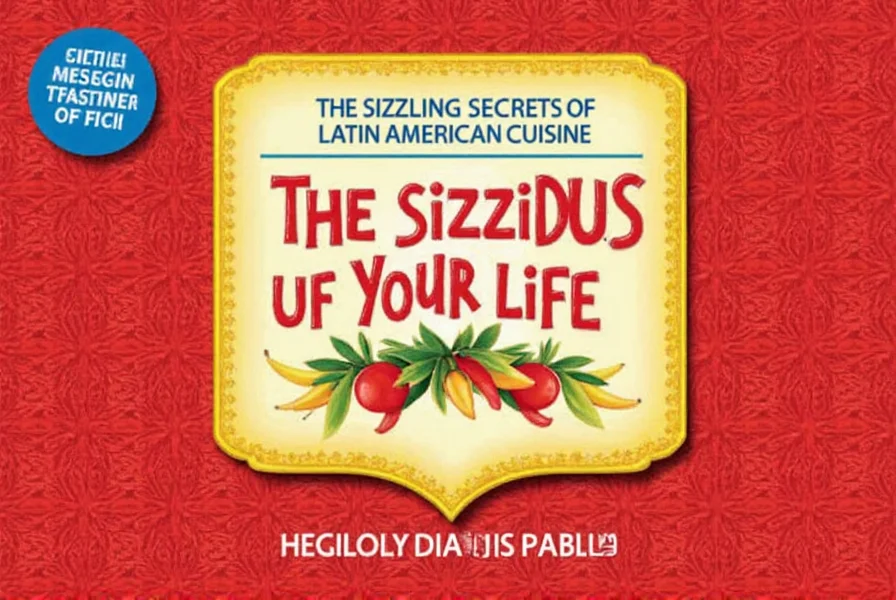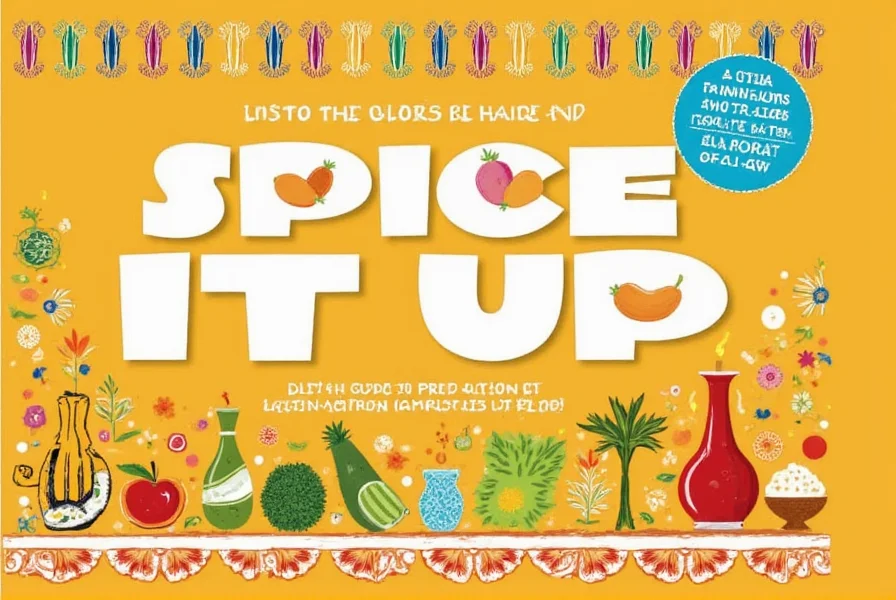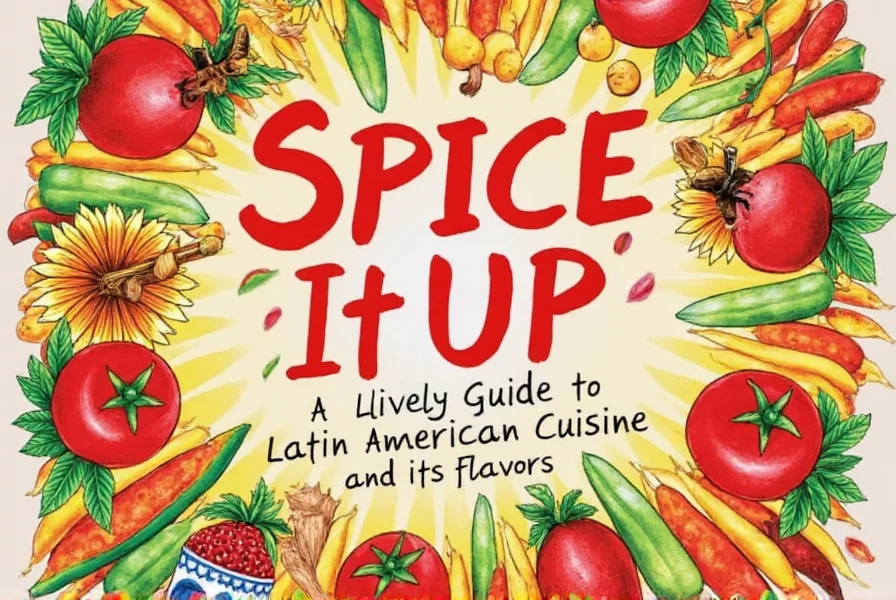Spice It Up: A Lively Guide to Latin American Cuisine and Its Flavors
Table of Contents
Introduction to Latin American Cuisine
Latin American cuisine is a vibrant tapestry of flavors, textures, and aromas that reflect the rich cultural heritage of the region. From the smoky heat of Mexican salsas to the fragrant spices of Peruvian ceviche, each country has its own unique culinary identity. What makes this cuisine so special is the way it uses spices not just to flavor food, but to tell stories, evoke memories, and bring people together.

Whether you're an amateur cook looking to experiment or a seasoned chef seeking inspiration, exploring the spices of Latin America can open up a world of new tastes and techniques. In this article, we'll take a fun and informative journey through the most iconic spices, cooking methods, and dishes of the region.
Must-Have Spices in Latin American Cuisine
Spices are the soul of Latin American cooking. Here's a list of the most essential ones you should know:
- Chili Peppers: Used in everything from salsa to mole, chili peppers add depth and heat. Varieties like jalapeño, habanero, and chipotle are popular.
- Cumin: Adds warmth and earthiness to dishes like tacos and stews.
- Oregano: A staple in Mexican and Central American recipes, especially in sauces and meat dishes.
- Cilantro: Fresh and aromatic, cilantro is key in salsas, guacamole, and soups.
- Paprika: Used in Spanish and Portuguese-influenced dishes for a mild, sweet flavor.
- Garlic and Onion: Base ingredients that form the foundation of many Latin American dishes.

Each of these spices plays a crucial role in creating the bold, complex flavors that define Latin American cuisine. The combination of these ingredients often results in a perfect balance of heat, sweetness, and aroma.
Essential Cooking Techniques
Understanding the cooking techniques used in Latin American cuisine can help you replicate authentic flavors at home. Here are some of the most common methods:
- Grilling (Asado): Popular in countries like Argentina and Brazil, grilling meats over open flames gives them a smoky, charred flavor.
- Stewing (Puchero): A slow-cooked method that allows spices to infuse into the dish, commonly used for soups and stews.
- Steaming (Empanadas): Often used for pastries and vegetables, steaming helps retain moisture and flavor.
- Frying (Frituras): Quick and delicious, frying is used for snacks like empanadas and churros.
- Roasting (Asado): Similar to grilling, roasting is used for whole chickens, meats, and vegetables.
These techniques not only enhance the taste of the food but also bring out the natural flavors of the ingredients. They’re a great way to elevate your cooking and get closer to the essence of Latin American cuisine.
Popular Dishes and Their Spices
Let’s dive into some of the most iconic dishes from Latin America and explore how they use their signature spices:
| Dish | Key Spices | Flavor Profile |
|---|---|---|
| Mexican Tacos al Pastor | Chili, cumin, garlic | Smoky, spicy, savory |
| Peruvian Ceviche | Lime, cilantro, chili | Tangy, fresh, zesty |
| Brazilian Feijoada | Garlic, black pepper, paprika | Savory, hearty, robust |
| Argentinian Empanadas | Cumin, oregano, onion | Earthy, aromatic, comforting |
| Colombian Bandeja Paisa | Chili, garlic, vinegar | Spicy, tangy, satisfying |
Each dish showcases how spices are used to create unique flavor profiles that are both familiar and exciting. These recipes are a testament to the creativity and richness of Latin American cooking.
Buying Guide for Latin American Spices
If you're looking to bring the flavors of Latin America into your kitchen, here's a practical guide to help you choose the right spices:
Top 5 Spices for Latin American Cuisine
- Chipotle Pepper in Adobo Sauce
- Features: Smoky, slightly sweet, and intensely flavorful.
- Advantages: Adds depth to sauces, marinades, and stews.
- Use Cases: Ideal for making chipotle-infused salsas or adding heat to grilled meats.
- Target Audience: Home cooks and professional chefs who love bold, smoky flavors.
- Suitable Occasions: BBQs, family dinners, and weekend cooking sessions.
- Mexi-Cali Cumin
- Features: Ground cumin with a warm, nutty flavor.
- Advantages: Enhances the flavor of beans, meats, and rice dishes.
- Use Cases: Perfect for making taco seasoning or adding depth to stews.
- Target Audience: Anyone who enjoys Mexican-inspired cooking.
- Suitable Occasions: Weeknight meals, potlucks, and casual gatherings.
- Spanish Paprika
- Features: Sweet and smoky, with a deep red color.
- Advantages: Adds a rich, complex flavor to meats and sausages.
- Use Cases: Great for making chorizo or adding color and flavor to stews.
- Target Audience: Chefs and home cooks who enjoy Spanish and Portuguese cuisines.
- Suitable Occasions: Special occasions, holiday meals, and dinner parties.
- Peruvian Aji Amarillo Paste
- Features: Made from yellow chili peppers, it has a bright, citrusy heat.
- Advantages: Adds a unique, tangy kick to seafood and vegetable dishes.
- Use Cases: Perfect for making ceviche or adding flavor to soups and sauces.
- Target Audience: Enthusiasts of Peruvian cuisine and adventurous cooks.
- Suitable Occasions: Dinner parties, cultural celebrations, and themed meals.
- Cilantro
- Features: Fresh, aromatic, and versatile.
- Advantages: Enhances the freshness of salsas, guacamole, and salads.
- Use Cases: Essential for making traditional Mexican and Central American dishes.
- Target Audience: Home cooks who value fresh, natural ingredients.
- Suitable Occasions: Casual lunches, family dinners, and summer gatherings.

When buying these spices, look for high-quality products that are freshly ground or made from premium ingredients. Store them in airtight containers away from direct sunlight to preserve their potency and flavor.
Conclusion
Latin American cuisine is more than just a collection of dishes—it's a celebration of culture, tradition, and flavor. By exploring the spices and techniques used in this vibrant culinary tradition, you can bring a piece of the region into your own kitchen.
Whether you're experimenting with new recipes, hosting a themed dinner, or simply looking to expand your palate, the spices of Latin America offer endless possibilities. So go ahead, spice it up, and discover the magic of this incredible cuisine.
Expand on the Latin American cuisine: Latin American cuisine is a dynamic and diverse culinary tradition that reflects the history, geography, and cultural influences of the region. From the Andean highlands to the Caribbean coasts, each country brings its own unique ingredients, cooking styles, and flavor profiles. This rich tapestry of flavors is built on a foundation of indigenous ingredients and European, African, and Asian influences, resulting in a cuisine that is as varied as it is delicious.










 浙公网安备
33010002000092号
浙公网安备
33010002000092号 浙B2-20120091-4
浙B2-20120091-4